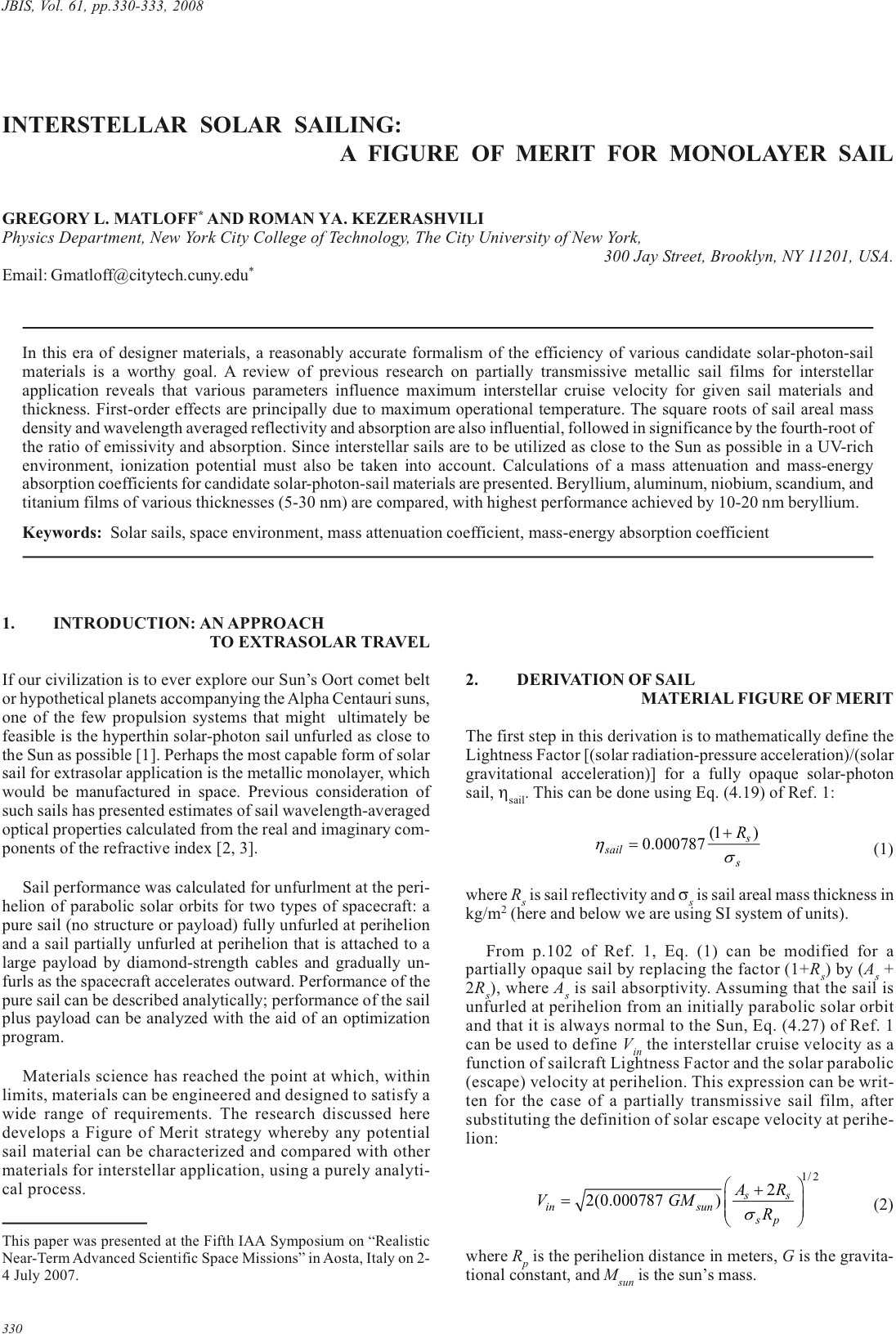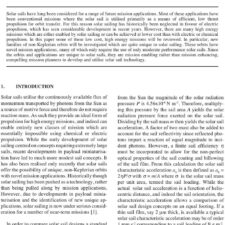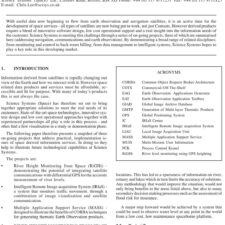Interstellar Solar Sailing: A Figure of Merit for Monolayer Sail
£5.00
G. L. Matloff; R. Ya. Kezerashvili (2008), JBIS, 61, 330-333
Refcode: 2008.61.330
Keywords: Solar sails, space environment, mass attenuation coefficient, mass-energy absorption coefficient
Abstract:
In this era of designer materials, a reasonably accurate formalism of the efficiency of various candidate solar-photon-sail materials is a worthy goal. A review of previous research on partially transmissive metallic sail films for interstellar application reveals that various parameters influence maximum interstellar cruise velocity for given sail materials and thickness. First-order effects are principally due to maximum operational temperature. The square roots of sail areal mass density and wavelength averaged reflectivity and absorption are also influential, followed in significance by the fourth-root of the ratio of emissivity and absorption. Since interstellar sails are to be utilized as close to the Sun as possible in a UV-rich environment, ionization potential must also be taken into account. Calculations of a mass attenuation and mass-energy absorption coefficients for candidate solar-photon-sail materials are presented. Beryllium, aluminium, niobium, scandium, and titanium films of various thicknesses (5-30 nm) are compared, with highest performance achieved by 10-20 nm beryllium.





